- Author: Lynn M. Sosnoskie
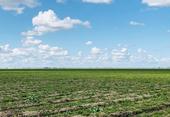
The recent rain events in California have complicated crop production activities for many growers including delayed planting or harvesting and altered pest management activities (including weed control).
Below are my thoughts about the possible impacts wet weather could have on weeds and weed suppression:
- Rains can facilitate seed germination and seedling emergence although wet soils may delay post-emergence control activities (be they chemical or physical operations). Sarah Light, a UC advisor working in the Sacramento Valley, wrote this blog post last year about soil compaction and strategies to avoid it (
- Author: Lynn M. Sosnoskie
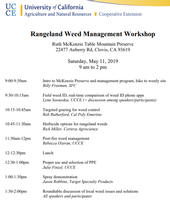
When: Saturday, May 11
Time: 9:00am to 2:00pm
Where: Ruth McKenzie Table Mountain Preserve (22477 Auberry Rd, Clovis, CA 93619, Fresno County)
There will be a hands-on, field-based extension day exploring weed identification, management options, and local best practices for the control of problem vegetation inrangelend systems on May 11 at RuthMacKenzie Table Mountain Preserve (22477 Auberry...
- Author: Lynn M. Sosnoskie
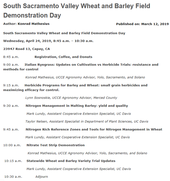
The South Sacramento Valley Wheat and Barley Field Demonstration Day will be held from 8:45 - 10:30AM on April 24th, 2019 in the Dunnigan Hills area. The program will feature UC small grain research on weed management, nitrogen management and variety testing. CUEs for Nutrient Management (0.5) and Integrated Pest Management (0.5) will be offered. Please see the following link for more information: https://ucanr.edu/blogs/blogcore/postdetail.cfm?postnum=29668
- Author: Lynn M. Sosnoskie
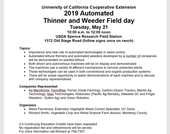
2019 Automated Weeder and Thinner Demonstration and Field Day
The 2019 Automated Weeder and Thinner Demonstration and Field day will take place on Tuesday, May 21, from 10:00 a.m. to 12:00 noon at the USDA Spence Research Field Station, 1572 Old Stage Road in Salinas. Automated technologies are helping to fill the gap in the supply of labor that is occurring in the farming community. At this field day weeders and automated lettuce thinners developed by a number of companies will be demonstrated on lettuce plantings. Both driven and autonomous machines that use a variety of different mechanisms to remove unwanted plants will be available for viewing. These technologies are useful to both conventional and organic...
- Author: Lynn M. Sosnoskie
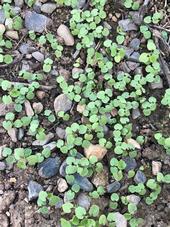
Abutilon theophrasti (commonly known as velvetleaf) is a summer-emerging, annual, broad-leaf weed native to Asia. The species can be found mainly in the Central Valley (and mostly in the Sacramento Valley) in agronomic crop systems, along roadsides, in orchards and vineyards, and in other disturbed areas.
Cotyledons (approximately 1/2 inch (12 mm) long and wide) are rounded to heart-shaped in appearance. The first true leaves are heart-shaped with with shallow and rounded-toothed margins. Velvetleaf cotyledons, leaves and petioles are covered with fine, soft hairs (hence the name 'velvetleaf').
Images are included in a printable PDF document at the end of the post. For more...



